~ This post is my epic roundup of recommendations for 202x! ~
When we talk about games, especially the indie game space, most of the games we suggest are ones with lots of critical acclaim, playtime, and that demand plenty of involvement. Playing a game these days feels like as much of a financial investment as it becomes a life investment.
I find myself drawn more and more to spelunking itch.io for tiny hidden gems… getting lost while diving into all the developer pages filled with all these odd little works. Browsing itch or GameJolt has become almost as rewarding as playing a game.
I think there’s a lot of beauty in the undervalued and buried odds and ends… When you find that one perfect thing that really resonates with you, or when you discover that one developer who’s aesthetic you just can’t get enough of… all this is truly special. I think it’s what makes the game space what it is.
Sulka is a beautiful puzzle atmospheric platformer that you can play in your browser.
– Sulka
There’s something personal about finding weird little things that nobody has heard about. Even better, when you share those and you can see how much delight it brings to other people.
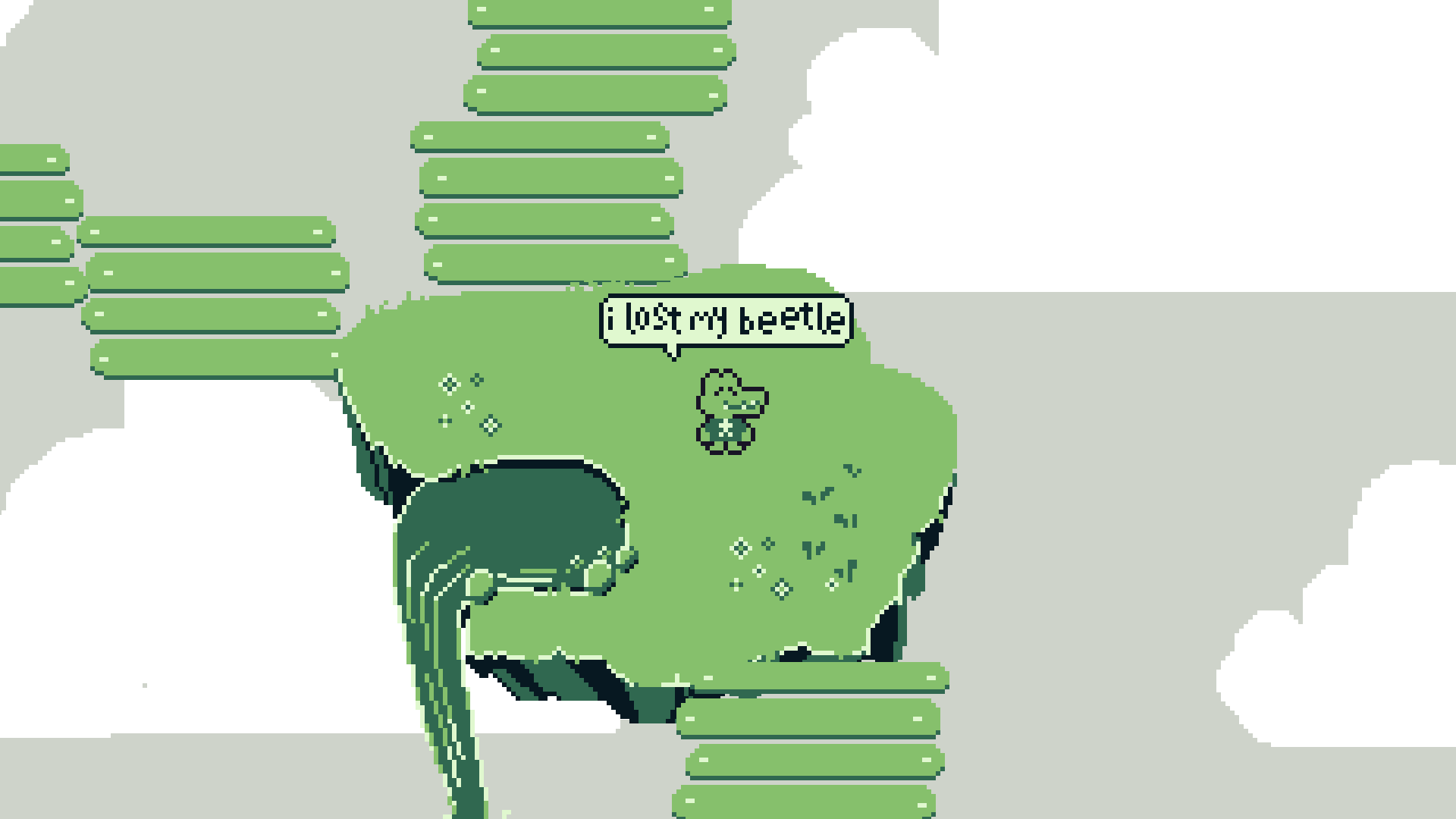
“b-e-e-t-l-e is a typing game minus the chaos and the anxiety. Type at your leisure and enjoy a chill, relaxing adventure filled with retro scenery.”
– b-e-e-t-l-e (browser)
I find myself drawn to these tiny experiments, little works, half-finished games, abandoned games, forgotten games, games not meant to be finished because they’re basically unplayable or unbeatable, games that really don’t care to be anything… It’s about the story behind the thing. It’s probably one of the most inspiring aspects of game development.
These things also seem much more sustainable to me. There’s an aspect of this industry, with that constant grind and hustle, that just spins out of control. It’s easy to burn out.
I draw less inspiration lately from the popular works, and more value from this space of tiny things. I say that because I think it’s really undervalued. These little works deserve much more attention than they are usually allowed. It’s also a space that’s in a difficult “grey area”, where these games are “too small” to be written about, but (by their collective numbers) they are very relevant.
Some will look at these tiny games as “hobbyist”, but I think that spaces like indie games at large are defined by the work of everyone, not just the few that float to the top.
When we make these little indie game mix-tapes, highlighting our own curation, and all these unknown finds… it kind of creates a record of current popular aesthetics.
Visual trends come and go, but what we collected stays… a memory of that footprint.
“a micro-interface playlist visualizer, lonely internet user”
– Teenage Fantasy
For example, look at the low-poly PS1 horror movement. It’s huge right now. If you start digging into this on itch.io you find all sorts of unsung contributors to this aesthetic. These styles, tones, moods, trends… don’t just come from one person or group of people. It’s a creative conversation contributed to by many people.
This is why “hobbyists” are so much more important than we give them credit for.
Here are a bunch of examples…
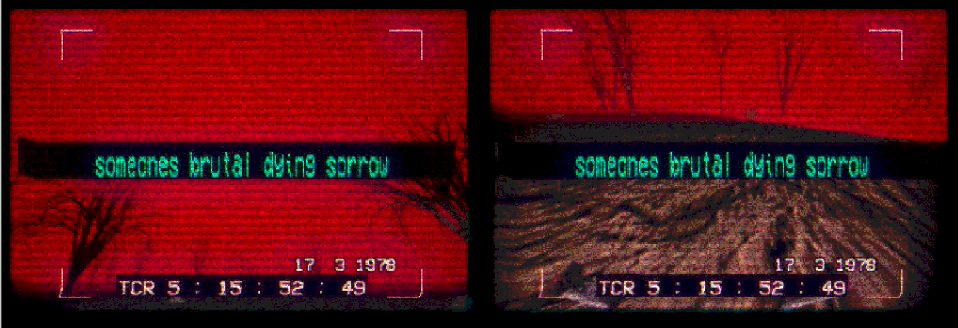
ONEIROI is something of a haunted dream walking simulator where you explore generative-like cursed landscapes with abstract text. The best way to play this is to chose “random dream”. It’s a weird visually stunning thing to explore.
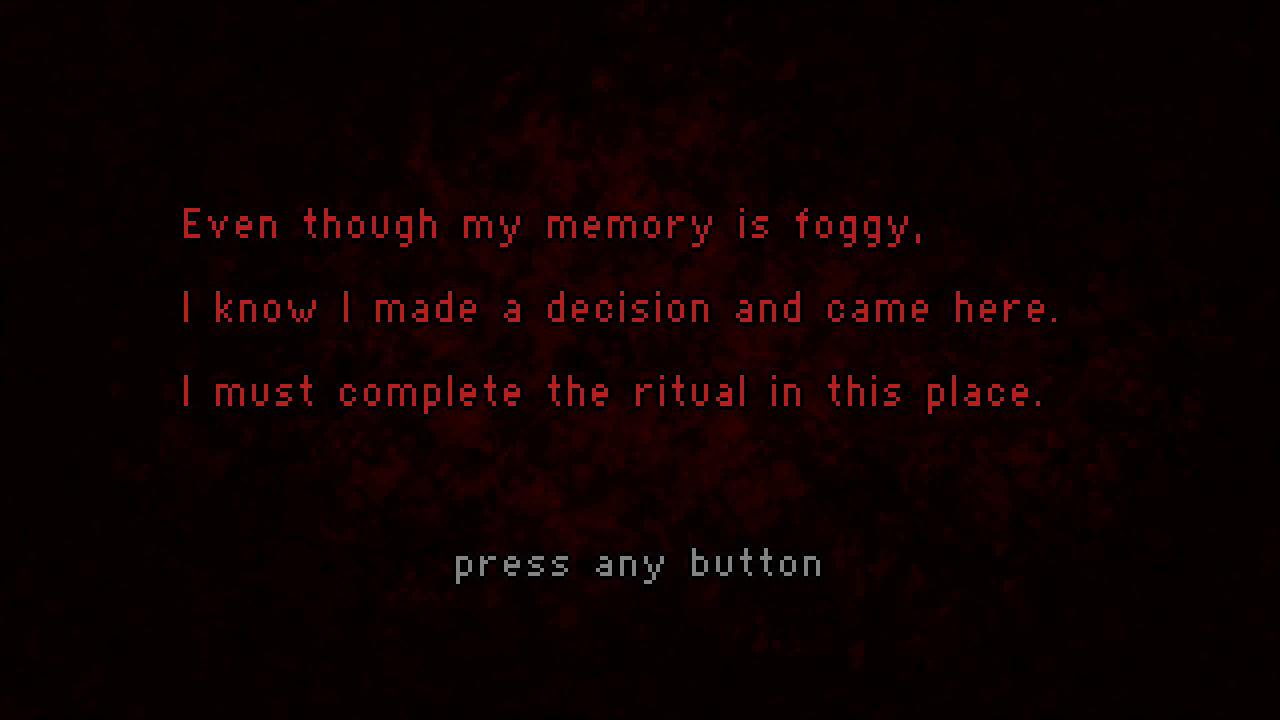
ruins in me -prototype- is a horror game in which you navigate through a school searching for items to complete a ritual. It’s by the same dev that made Dimension of Void… both are interesting just to play through, for the love of collecting prototypes or unfinished work.
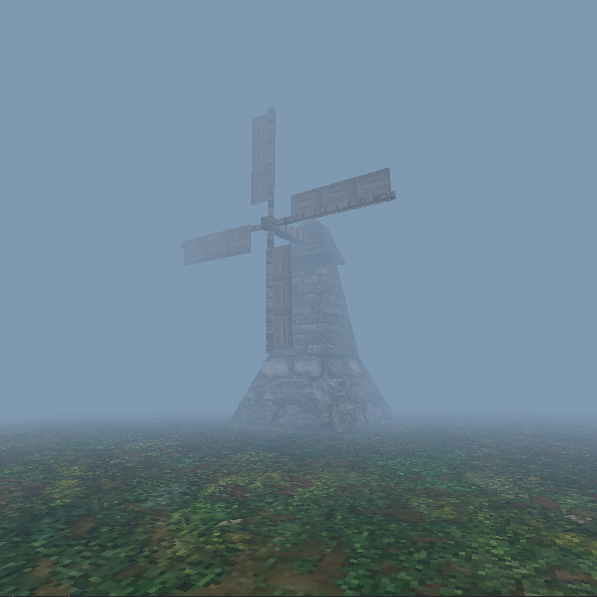
“You wake up on a large patch of grass, the fog is thick and all you can see is a nearby windmill. Something compels you…”
– Windkill
Windkill is simple but unsettling to be in.
“in the sunless void, crawling abominations hunt each other throughout an endless web
fighting and dying over corrupted signals beamed from a place that isn’t so empty
shreds of something in a world of nothing”
– SKINCRAWLERS
SKINCRAWLERS delighted me because I don’t think I even want to play playable games anymore. I just want this…
As you can tell by now, my going theme here is: Don’t just settle for the artists that become popular. Find your own! Collect tiny games! It’s tremendously rewarding.
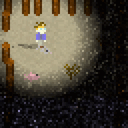
“you make no hesitation to fire up the disk and see what secrets the previous owner has left for you and – oh my god, you’ve been sucked into the computer!”
– spook.exe
This year I accumulated a pile of links to little games that meant something to me. Where just interacting with them gave a sense of delight, wonder, horror, or spoke to me in meaningful ways.
I think there’s a lot you can get, as a designer, from playing into the emotional state of weirding people out. Why even make sense when games lend themselves so well to being surreal? Succumb to the void!
Either way, avoiding that tangent…
Many of these games are not necessarily small, but they respect your time by not demanding loads of involvement. I think it’s unfortunate when many of my developer friends phase out of playing games entirely because (popular) games are too much of a time-sink. Although, when you ask what they play, most of them play AAA games or AAA-indie.
It’s unfortunate when there’s this huge space of respectfully manageable games ranging between itch.io or GameJolt where you can find a lot of hope and energy just engaging with it. There’s joy to be had here, in exploring work that someone put up not even expecting anyone to play it. I’m consistently surprised by how good much of it is.

“While exploring a mysterious cave in the forest a completely unpredictable accident leaves you trapped underground where you must escape by using you inhuman strength to hurl giant blocks at your enemies and activate abilities conferred by special blocks.”
– Violetti Goottii
I developed a habit of browsing the PS4 store by looking at the cheapest, most burred games, and it’s like you look into some alternative reality of how games could be… Stripped of award winning professionalism, big words, critical acclaim, you find yourself in a shadow realm of unsung gems.
I stumbled on Violetti Goottii this way. I think I payed something like 99 cents for it… I don’t remember. It was in a price range that made me wonder “do they even let devs charge so little for their work??” The fact that it was so cheep was what piqued my curiosity. It looked strange. Like somehow this game manifested itself here as a haunted relic for one person to find.
Poetry of that aside, playing it on the PS4 is really the best way to do it.
Violetti Goottii is a weird, bizarre platformer that I deeply appreciate.
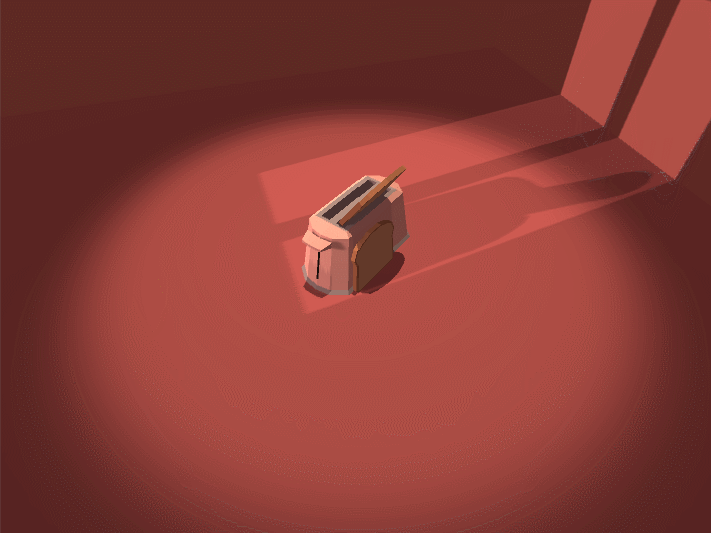
“Toasting is a way of life. Wouldn’t you like to toast in a sensual way in this rather poetic and sexy toasting simulator? Of course you would. Please proceed and make yourself confortable with our charming toaster.”
– La fumée des miettes
I don’t really know how I found it, or maybe it found me… A toasting simulator ended up being the one thing that stood out to me most this year. When people ask what I enjoyed the most, I send them this. Half joking, but also kinda… serious.
It’s pretty much the perfect game. I don’t know what we’re still doing here now that this game has been made. We can all stop making games because La fumée des miettes has set us free. Our souls may escape the loop of game dev and Twitter now…
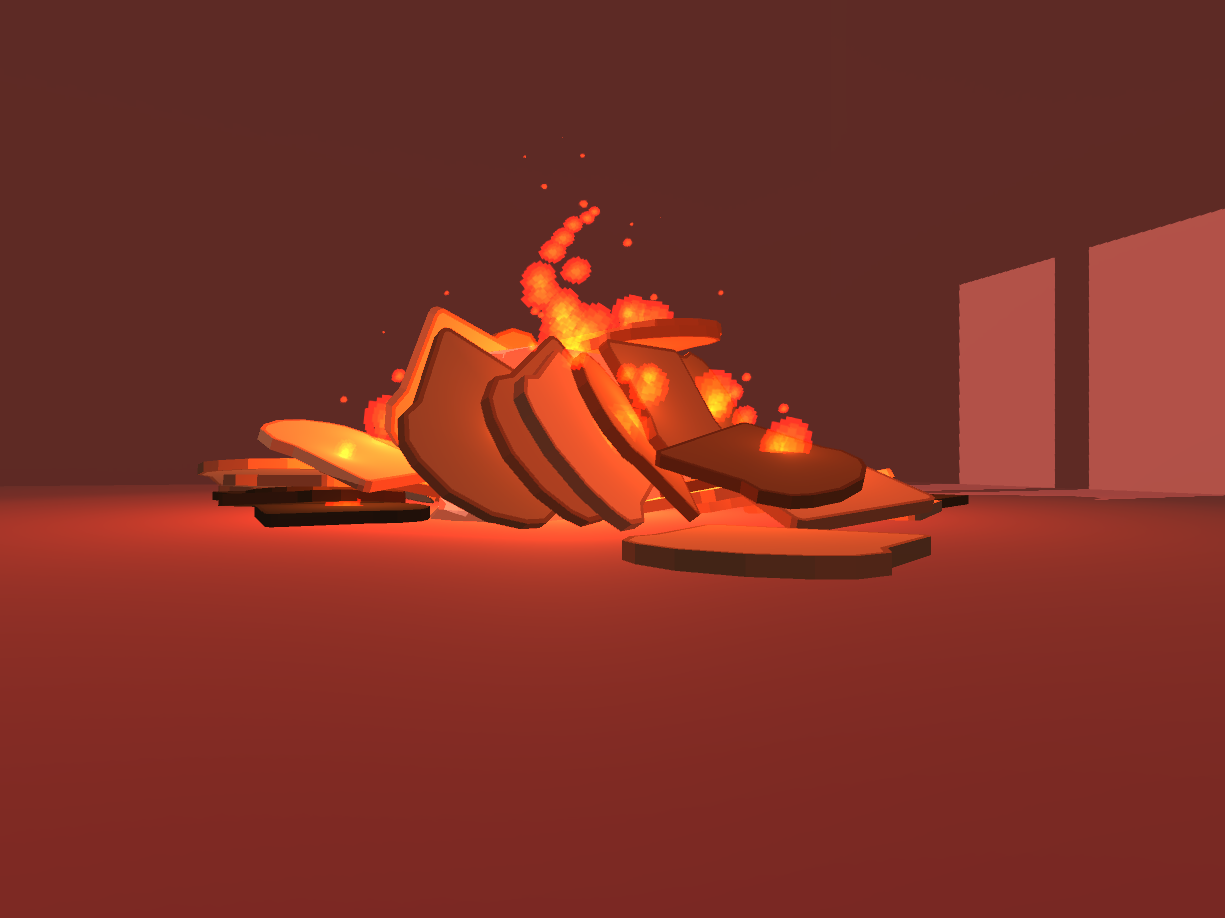
Seriously tho, I think this is a wonderful example of the joy in tiny things.
La fumée des miettes is a browser based toasting simulator in which you play a toaster. You can generate an infinite pile of bread. You can burn the toast. You can also set your entire bread pile on fire if you toast your bread for too long. This limited set of things to do makes for some really great humor.
You can burn toast like the world burns!
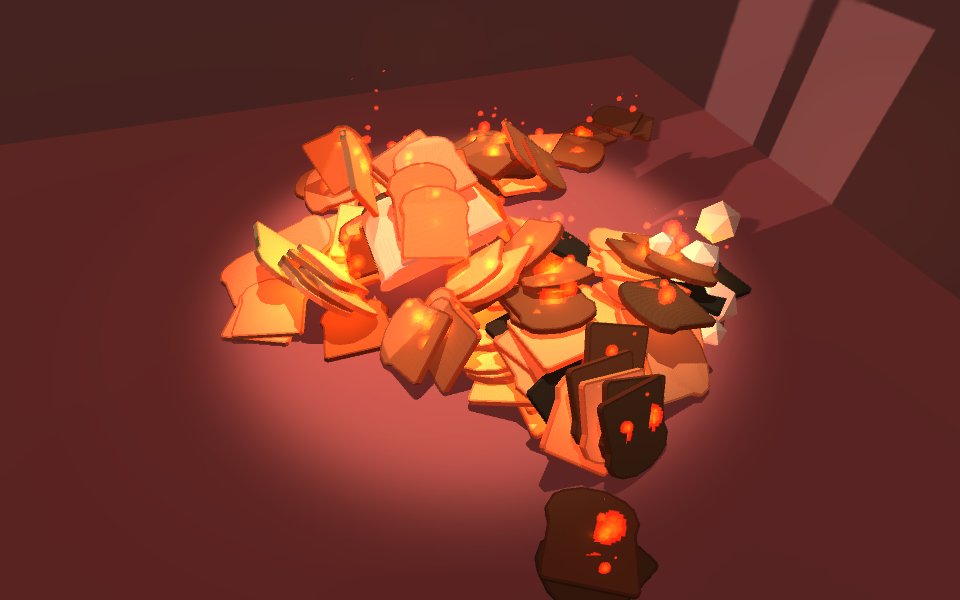
Because there’s a limited set of interaction, and because of how all the elements play together, you end up laughing quite a bit while you explore this little toy. I think something should be said of how these little experiments, when they’re well designed or when they just come together really well, end up being this perfect tiny package of play. Just the interaction can be enough.
Games like La fumée des miettes fall more in line with digital toys. I think equating these things to “toy” is a pretty unique way of viewing them because, when you think of designing, it opens you up to the mindset that just tinkering with some interactive thing is enough… allowing a player agency over defining the actual experience. There’s no set goal. You don’t give them a meaning. You just give them a set of things to do in the space that has been created.
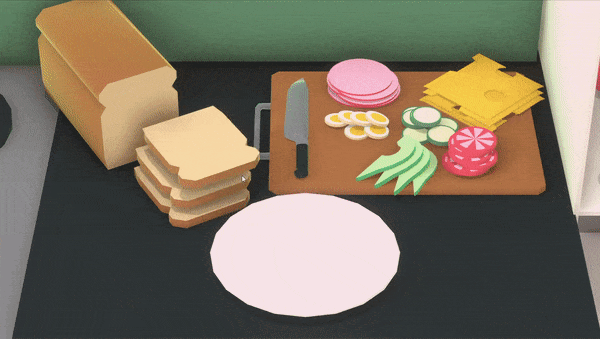
“Make yourself a sandwich.
Take your time.
Put some toast on a plate.
Make a grilled cheese, or a artisan deconstructed veggie sammy.
It’s up to you.
You know you want to.”
– Sangwich
For example, the chaotic sandwich making simulator, Sangwich, lets you klutz around with physics as you try to create tasty bread-constructions. Getting the meal onto the plate becomes truly chaotic as you struggle hard not to knock everything over.
It’s fun, silly, small… The size of Sangwich is what makes it so endearing. It’s not huge. I invent my own goals in this as I try hard to balance pieces of food, exploring how the setting reacts to what I choose to do. If you look at it as a sandbox toy, it’s really interesting.
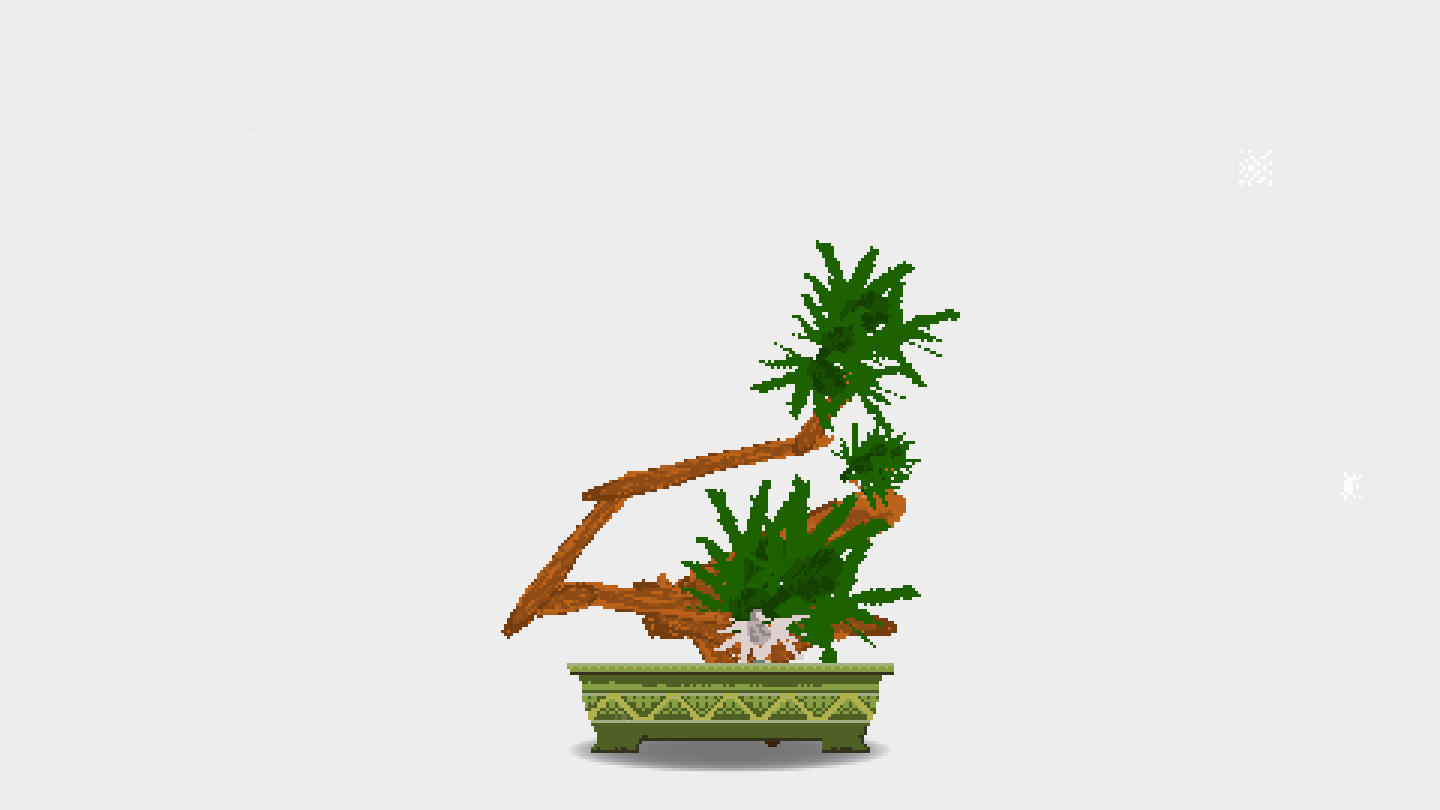
Bonsai Builder is a browser based bonsai maker. You can grow and shape your own trees. It’s something between an art toy and therapeutic meditative experience.
– Bonsai Builder
When you elaborate on the “toy” concept I think that things get fascinating… both in terms of design but also engaging with a work.
For example, I think projects like Bonsai Builder are amazing to collect because they’re such wonderful examples of merging a creative tool with a toy. They let you explore creativity in context of a very defined environment (like growing bonsai).
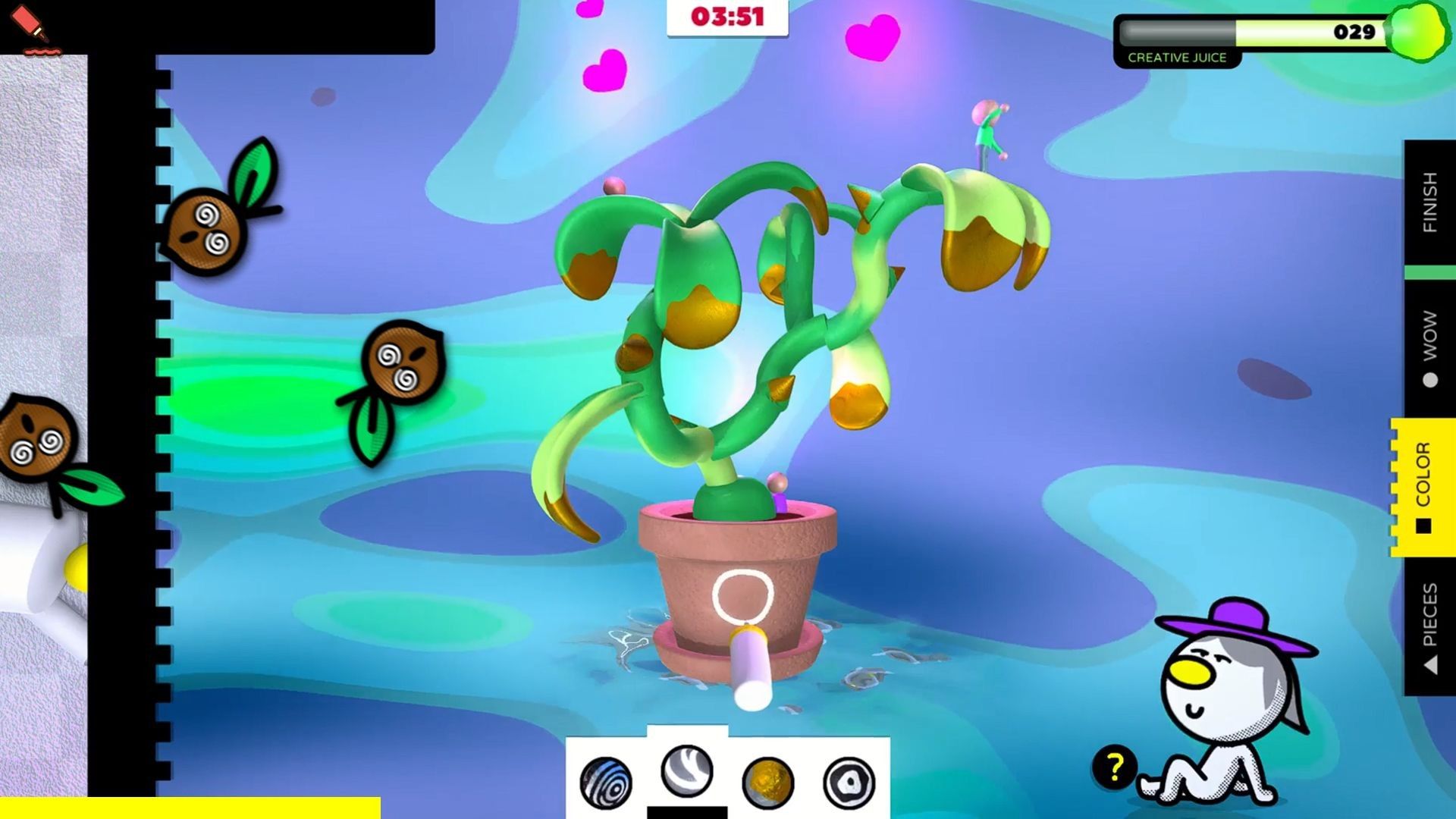
“A hero thing, a monster thing, a robo thing… in Mini Maker, you can make any ‘thing’! Use an arsenal of plastic limbs, wonky tools, rainbow stickers and googly eyes to assemble creations, please demanding clients, and laugh in the face of perfectionism.”
– Mini Maker: Make A Thing
An even more elaborate example of all the above… Mini Maker: Make A Thing is amazing to look to because it’s all these concepts, but fleshed out in a much broader scope.
In Mini Maker: Make A Thing you are tasked with making silly characters (objects, things… it’s up to you). Goals are assigned to you, and you buy parts. There’s a story to what it asks you to do. It’s beautiful, and refreshing. You can really get into what you are building, so there’s a sense of freedom in that the game isn’t completely in your face with tasks or goals… while all this is still wrapped in a world that you play through.
It’s a great example of a type of interaction (build something silly) that (if boiled down) could easily be a silly browser experiment, but it’s given a broader purpose.
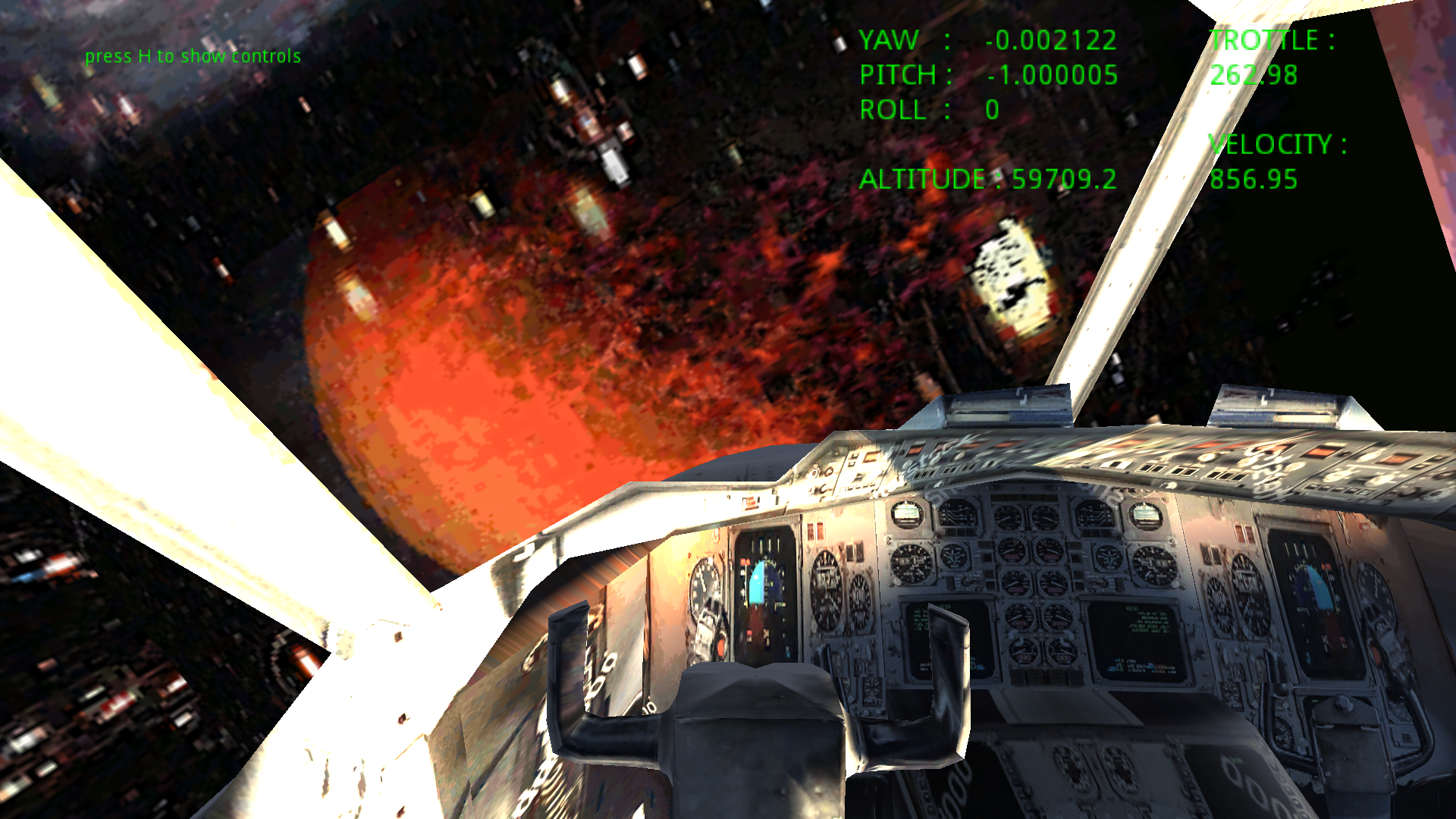
“Pilot across skylines, oceans, deserts, real mountain ranges, real-time weather simulations, the planets and beyond…”
– Flight Simulator 20XX Infinity (probably one of the greatest and most bizzare flight themed things you can play)
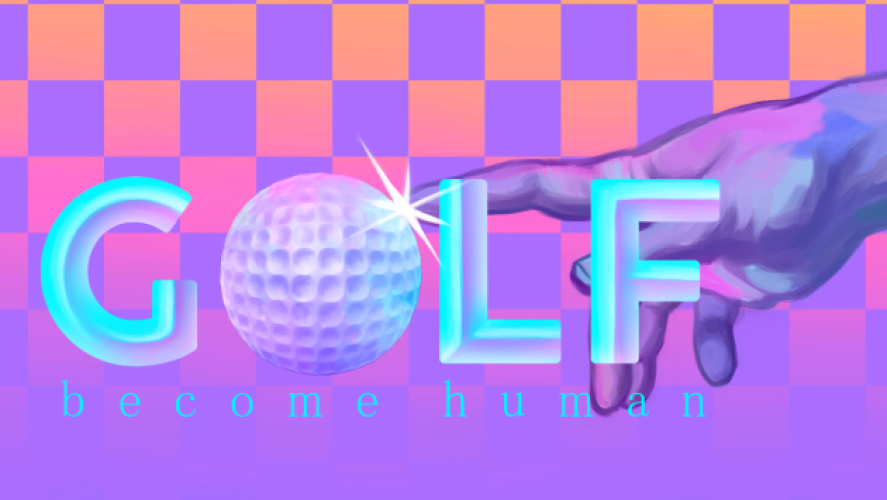
“Golf: Become Human is a golf/adventure game where you play as a human turned golfball trying to complete trials to earn your humanity.”
– Golf: Become Human
These intersections (toy, tool, [other thing] WITH “game”…) is one of those things that I end up frequently talking someone’s ear off about. I think we (as designers) painted ourselves in the corner when we established that Game Mechanics (Proper) have to have this very mechanical set of things to be considered “good”… be about mastery, skill, that magic circle… all this classic design is really defined. It’s a type of mindset that’s hard to break out of.
Game Design (proper), with this entire (classic) design language and existing suppositions surrounding it, is so established that I feel like you could teach a computer how to do it and it could endlessly throw out concepts that fall into what we view as good design. It’s a mechanical mathematical machinist way of approaching game design.
I see a lot of (dev) friends trying hard to kind of shed these suppositions just to find their own design language after largely building their understanding of “game” around this.
Projects like a silly toasting simulator, or sandwich making sandbox, are refreshing for how you can explore alternatives that are simple. Looking at things like Mini Maker you see that they can be very elaborate, very engaging, and just as effective too.
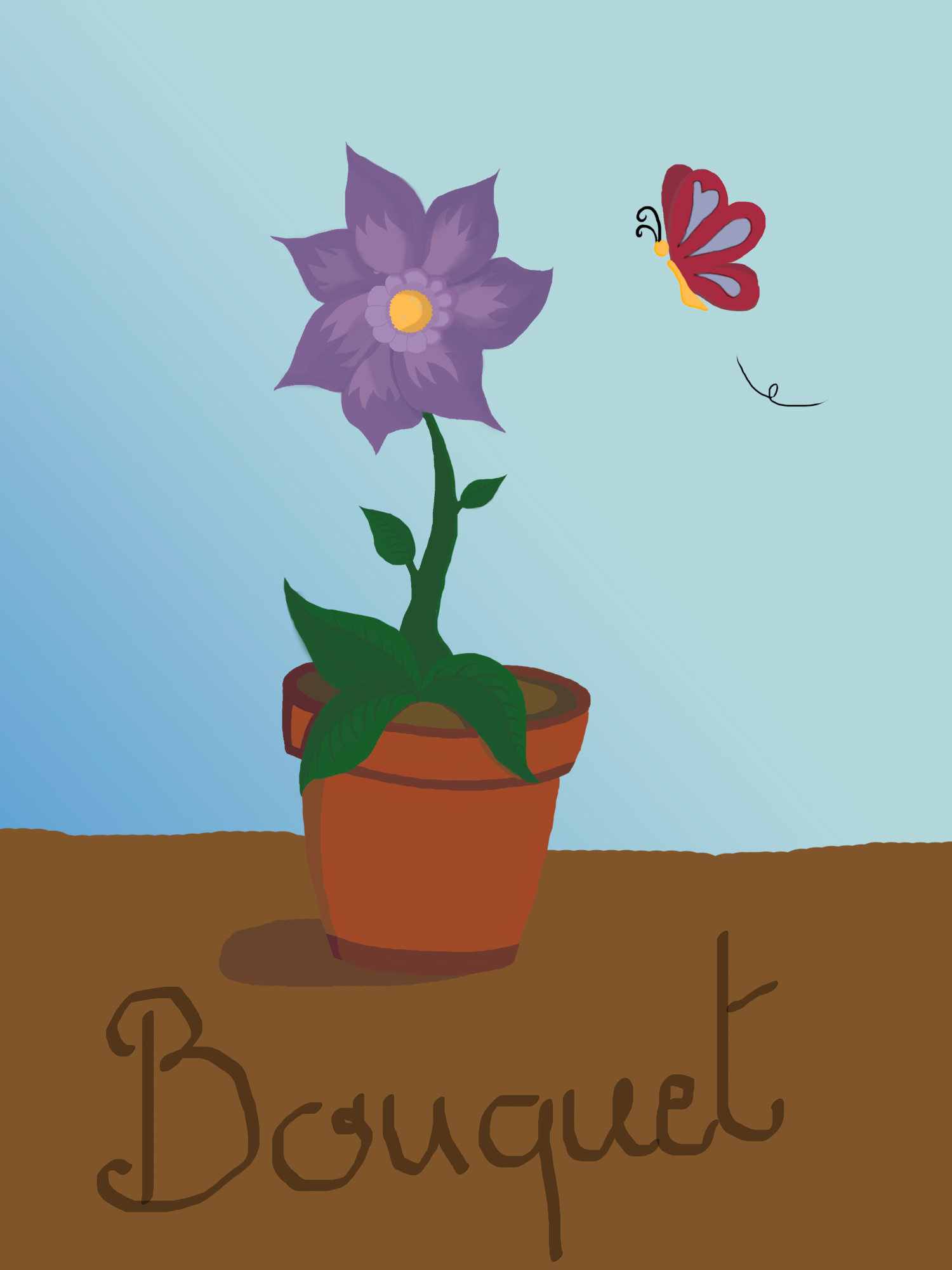
“As a butterfly, you must take care of your flowers. Water them, name them and watch them grow in a browser tab while you’re doing something else!”
– Bouquet
Bouquet is something between a virtual pet and creative toy in which you control a butterfly that builds a beautiful flower garden. You arrange pots, and plant seeds. As time passes (and you actually have to wait, so go do something else!) you end up with a beautiful garden.
I love this because you HAVE to wait. It slows you down. There’s no immediate reward. The developer said that my writing on desktop pets partly inspired this, and I think it’s a very novel way of approaching that concept. It’s a good example of a limited set of interactions done well, with a reward in the end (look at your beautiful garden!). Anyone building on the concept of “virtual pets” is wonderful to see.
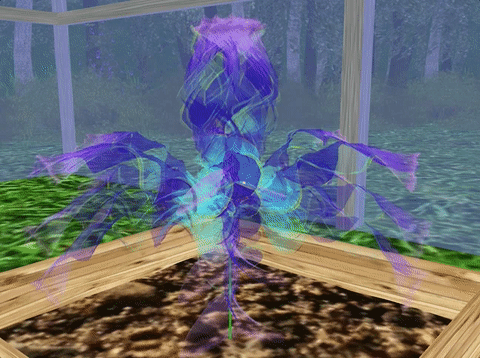
Note: See also Bonsai Growth Simulator or GROUNDSKEEPER because you can never have enough relaxing games about growing things…
There are a million ways to design something that still ends up being engaging (outside of traditional design). If you reject the concepts of “traditional design” altogether, drawing from other spaces (like toys), it can be just as meaningful or interesting.
As another tangent to this, I think it’s an interesting experiment to do… ask a developer to talk about their game without calling it a “game”. See what language they fall on to describe it. Or ask a developer to describe their game without falling on existing game design trends or games… like they are barred from talking about it as a “metrovania meets dark souls meets” and have to describe it without those terms… It’s an interesting experiment to do on your own work too!
I think it’s really important to have inspirations, or sources, outside of games that you explore, to incorporate into your own interactive language.
Games (as a meaningful medium) can be really “niche” to a lot of people for how they come across as existing in this “echo chamber”, where you have to have pre-existing knowledge of things like “metrovania”, “platformer”, “dark souls-like”… Really interesting new work often happens outside of these heavily defined interactive constructs.
That’s why anything you find on itch, even the abandoned projects, are so important to me. They’re a refreshing bite-size way of looking at games.
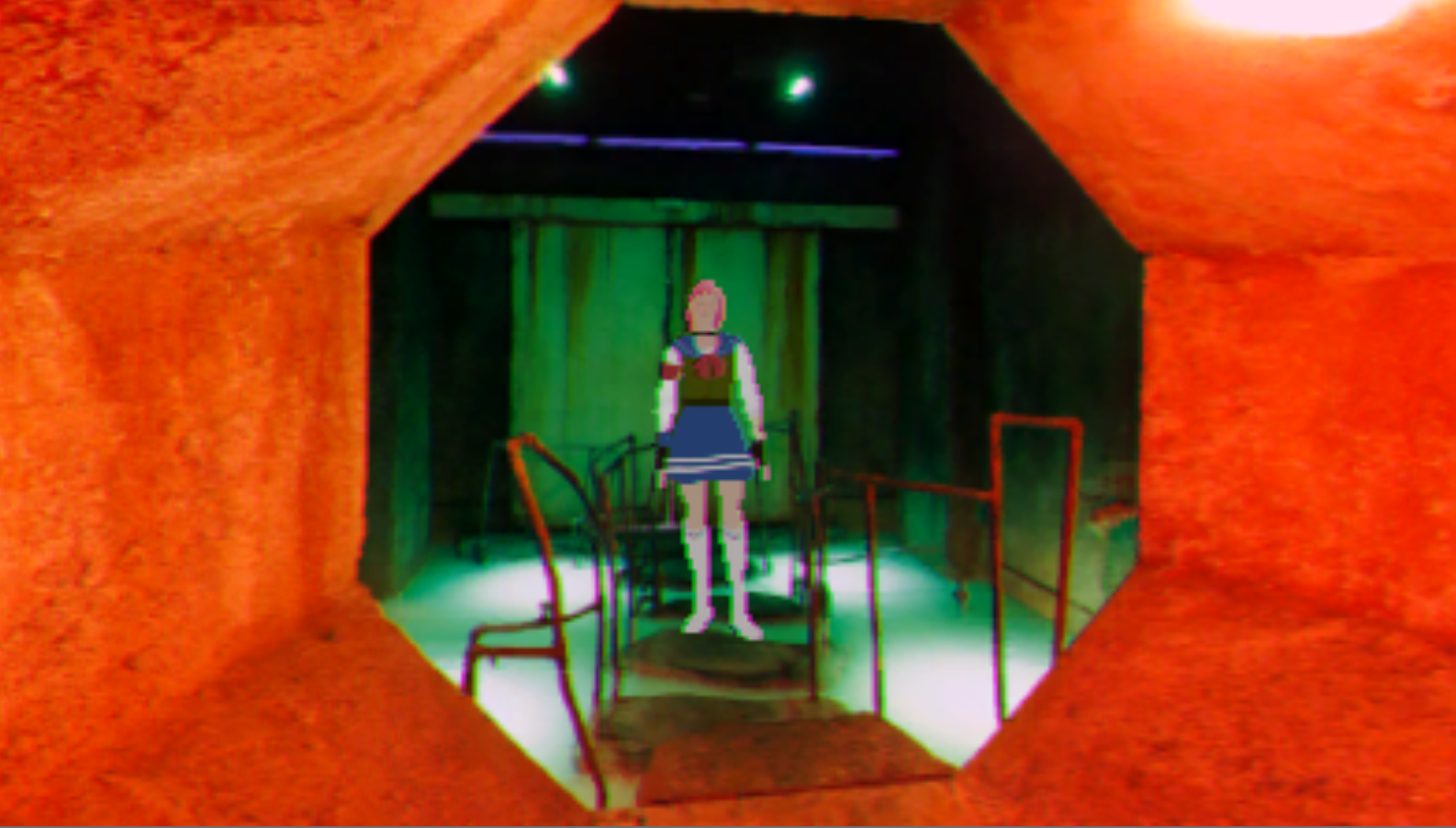
“Duvet is a short adventure-puzzle game made in Unity about a dystopical world with militarized magical girls.”
– Duvet
When I talk about all the above I think it’s important to also highlight how writing can play into this. “Literature” has this huge role in games that I think is fascinating to explore.
My very first project was “interactive poetry” in the form of environments where you explore the writing in ways that make you really experience the messages and meanings of the poems. It was a Flash project, so now it’s lost to time, but you can still see parts of it recorded on youtube (to give you an idea of what I’m talking about)…
Occasionally I come across works who’s initiative I find similarly inspired. The concept of exploring writing in different ways (ranging from poetry, or just an interesting story), where the mood of the writing is made all the more powerful for the fact that this is an interactive project… is one of the aspects where I think games can be particularly powerful.
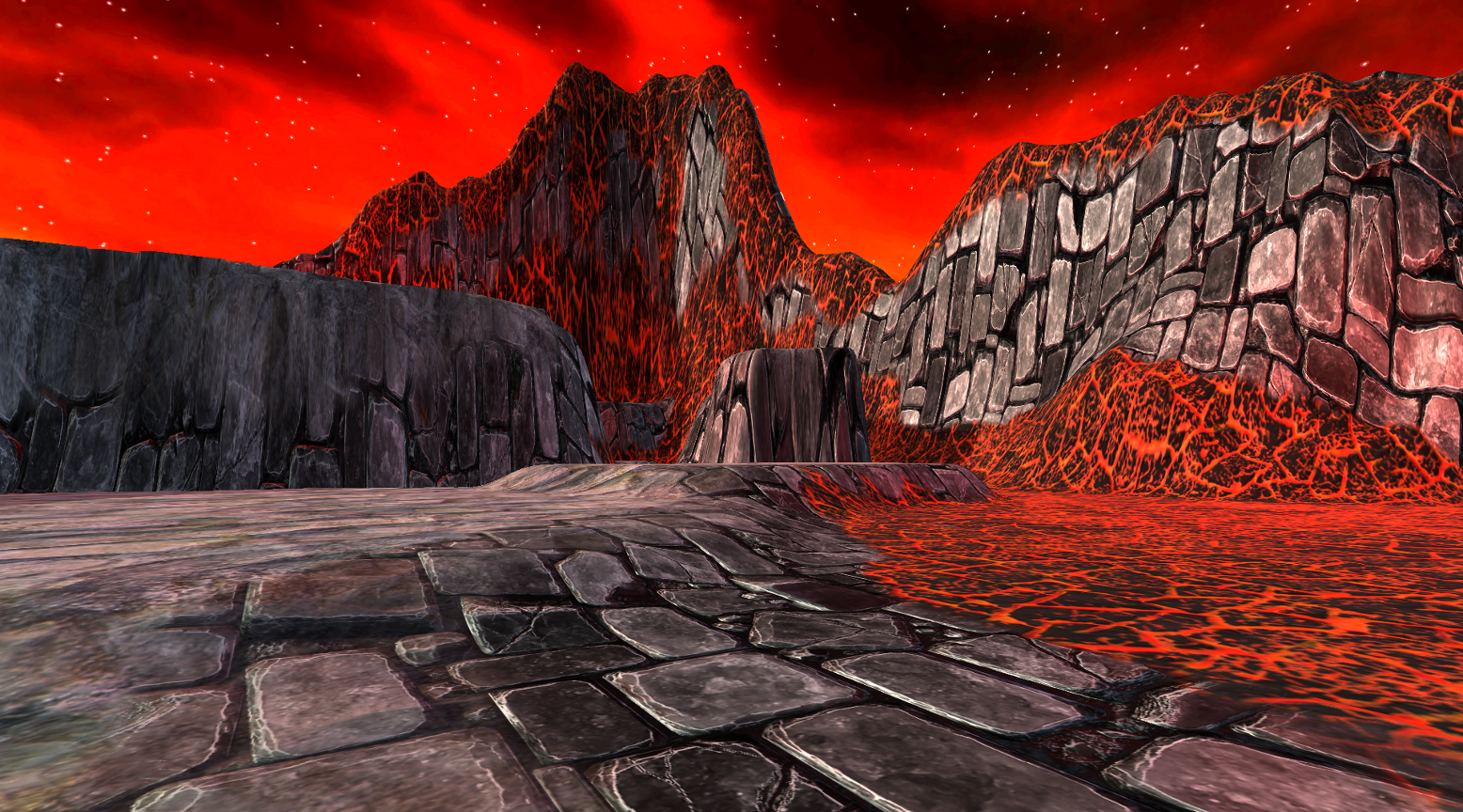
“This is a short, deep thought, philosophical experience.
The project gave me something to focus on during a hard time in my life.
If you need a place to contemplate existence or just think, this is for you.”
– Attainment
Attainment is a short, personal, introspective walking simulator. It’s one of many examples that uses an environment to illustrate words. I think it’s a beautiful example.
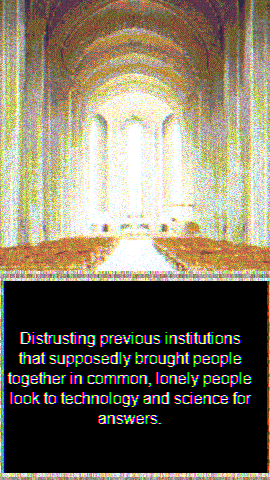
“In the year 2040, human beings look for increasingly strange solutions in hopes of finding connection and community.”
– Discover My Body
Discover My Body is a game that really stayed with me, long after playing it. It’s a horror game. It seems simple. You explore the body of a person undergoing a transformation (I don’t want to spoil the fiction since this is something you really should experience for yourself). It’s something of a discussion, with this person talking to you as things unfold. It’s the type of horror that isn’t outright scary. It creeps on you, slowly becoming more and more unsettling. You reach a point where you’re not sure if you’re doing a good thing, or…?
Discover My Body is a wonderful example of delivering writing in a meaningful way. It’s so simple, design wise. You click around. The entire delivery of it ends up being deeply meaningful. It’s metaphoric, creepy, lots you could read into it… You really need to try it!
It’s kind of the horror equivalent of Riba… but I talked about Riba a lot before so I won’t do it again here… That said, sometimes you just need really good writing and that’s enough.
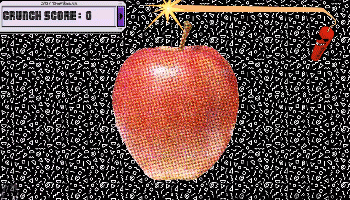
Good game design is about playing to your artistic strengths. You don’t have to be an amazing programmer. You just need to design around what you’re good at.
Writing, especially when coming from personal experiences (whether literal or metaphoric), is one of my favorite. When done right, the experiences can be truly haunting.
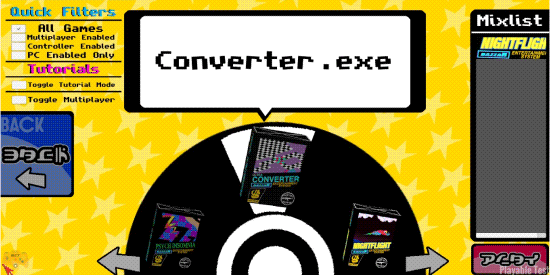
“Bizzarioware is your all access pass to wasting time immersed in a fast-paced hypercosmic void of micro design. That distant yet familiar feeling of throwing back an off-brand energy drink as you race down the freeway two hours before the sun comes up and underglows bypass your pupils, piercing straight through your retinas.”
– “Bizzarioware
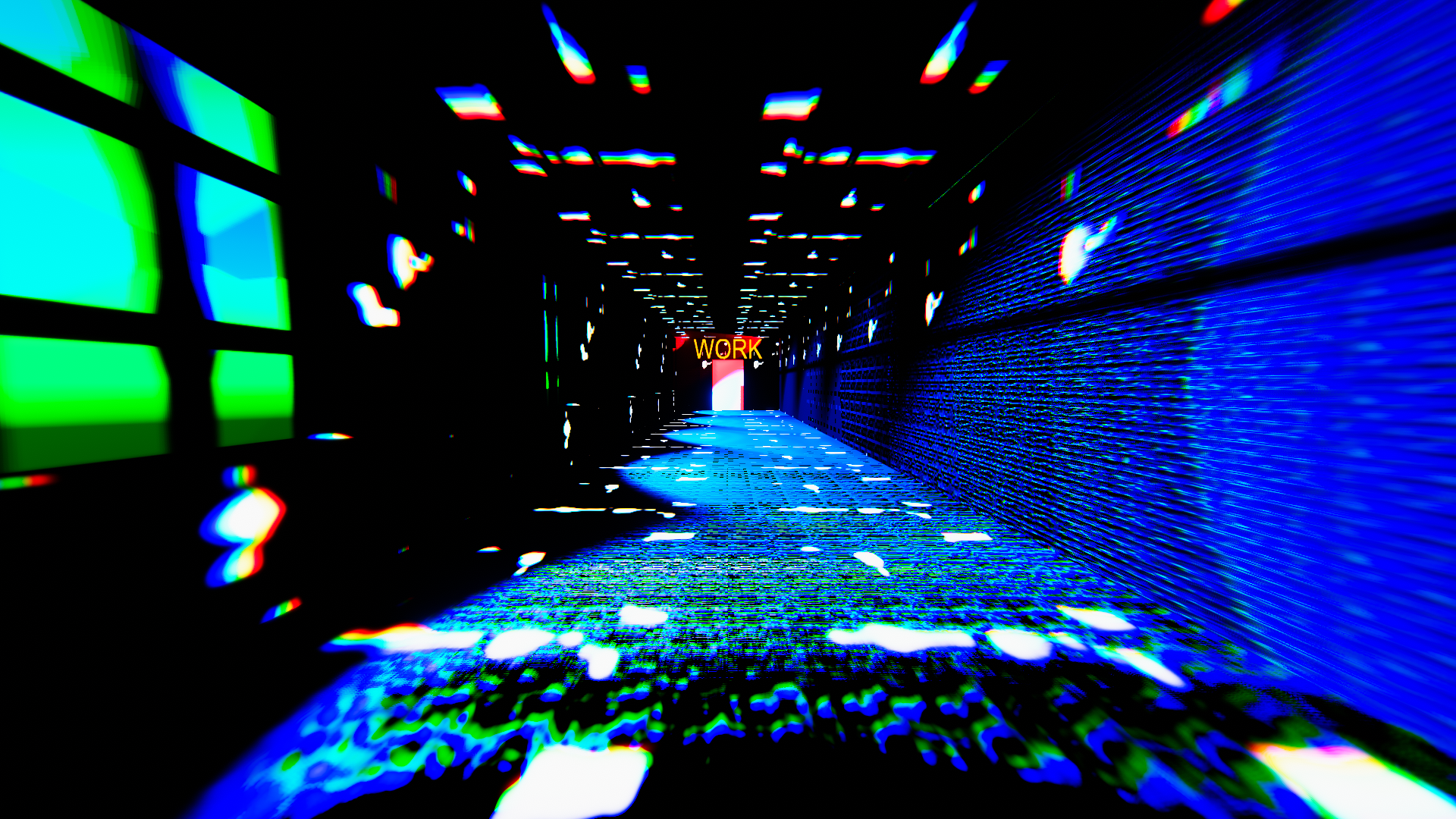
“An approachable normal sized shoehorn of an endorsement of a pervasive title, derived from two pieces of art, shoehorning itself through the game in an intimidatingly weird and large fashion.”
– 30 HOWL
I played through 30 HOWL and it left me wondering why we expect video games to even make sense?
We try so hard to make them make sense. To imbue them with story. To rationalize the virtual world we create, give context or meaning to what we ask a player to do… but, in the end, they’re bizarre. They’re broken weird things demanding an incredible amount of suspension of disbelief to… just believe.
When a game ages is when it becomes the most interesting because, after all the hype and “cutting edge” wears off, what’s left behind is a weird disjointed thing that didn’t keep up with the times.
Playing games I used to think blew my mind, and were incredible and immersive at the time, kind of demonstrate that to me. Check out the game Quarantine (by Imagexcel, 1994), Bad Mojo, Creature Shock, MDK … All these I thought were amazing when I was younger. Playing them today, they seem like weird art experiments. They’re the funniest when they try to take themselves serious.
Younger me used to be a big fan of Myst (when it first came out). I read all the books too. Today it’s such a weird contrast to be in it, as compared to when it was first played in the era that it came out.
All games are weird when taken out of context of their era.
Playing tiny unknown games, that are just weird on the outset, make so much more sense to me. They’re not trying to be games. Some of them are truly delightful brain farts.
I think an important point to make is that these are the types of experiences that make me feel like I’m re-discovering games all over again, that it’s the first time I’m ever playing a game, and that’s an important feeling to keep alive as a designer.
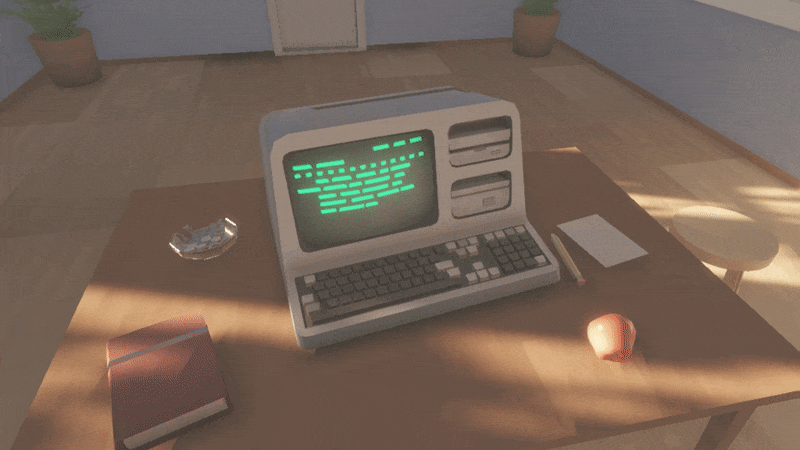
“A game about being stuck in a routine.
If you play his game in hope to win, you will end up with an irritating feeling inside of you. Nothing else. But if you stop and take a breath of air, then you might like it.”
– Routine Feat
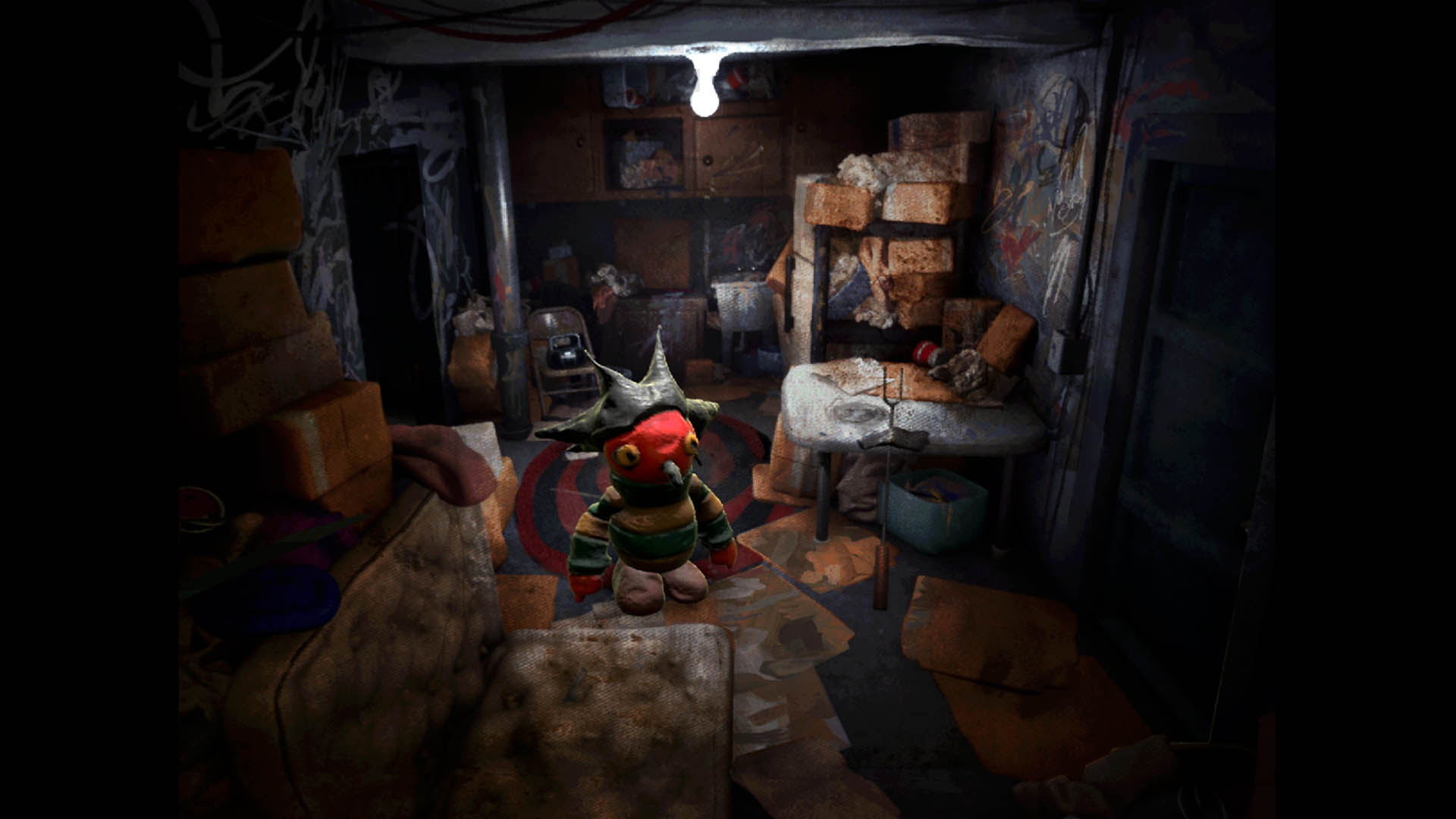
“Explore an unsanitary environment to complete a gourmet dish cooked by candle light.
Solve the puzzles of your messy home and enjoy the comfort that surrounds you.”
– Gob
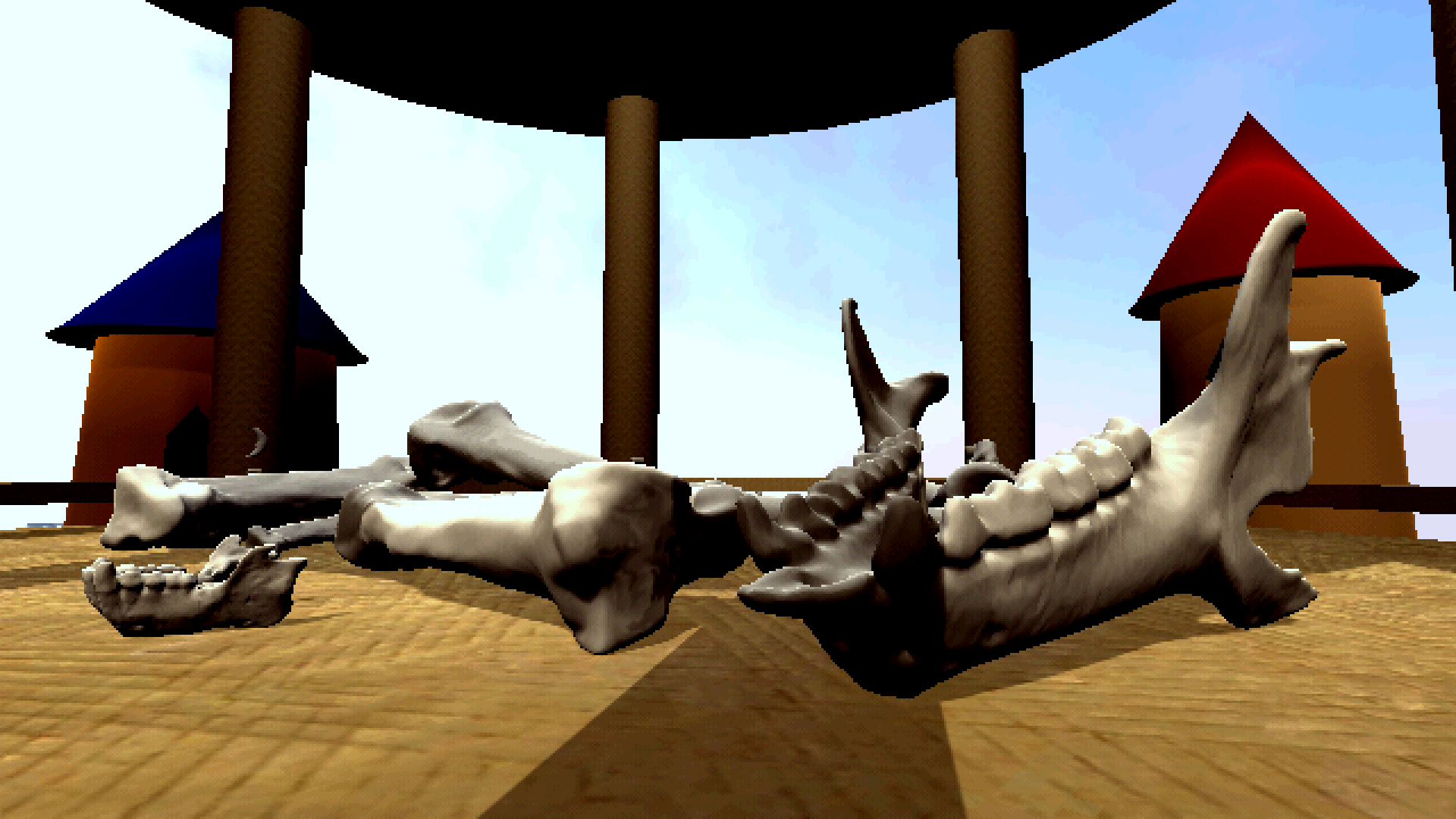
“Boneroom is an ambient space operated by and for angels, loaded with bones and buttons for the celestial visitor to enjoy.”
– Boneroom
When I hear people complain that there were “not enough good games this year” (same argument as any year) I feel like they’re looking at this space through critical acclaim blinders.
There’s a steady stream of games constantly coming out. Many of them aren’t even as weird or small as the ones I mention here. Many are coherent large works that don’t get the attention they deserve.
(Stop being lazy and look!)
I don’t think the problem is that there “aren’t enough good games this year”. I think the issue is that there are too many games and not enough people paying attention.
I encourage you too to browse the PlayStation store for the lowest possible rated, or not even rated at all, least possible played, cheapest possible weird looking thing and give it a shot. Even if (by popular standards) it’s “a bad game” it still has a lot to offer… and what do you have to lose? It’s tiny. It barely costs time or money.
I saw someone react to my writing on tools (I put a lot of work into public speaking and posts about experimental tools this year), and they enthusiastically said they don’t want to do boring things like “make games” they want to do something exciting like make software! I loved seeing that. The most exciting work isn’t found in the spaces with the well fleshed out definitions and critical acclaim, it’s found at the weird intersections that don’t make sense or even have definitions yet. You have to go look for it to find it.
I’ll end this with a list of devs that you can check out and follow. Note that many of them have their own itch.io curations too. These are all wonderful rabbit holes to fall into.
https://supposedly-spooky.itch.io/
https://phagemaleficar.itch.io/
https://hundredrabbits.itch.io/
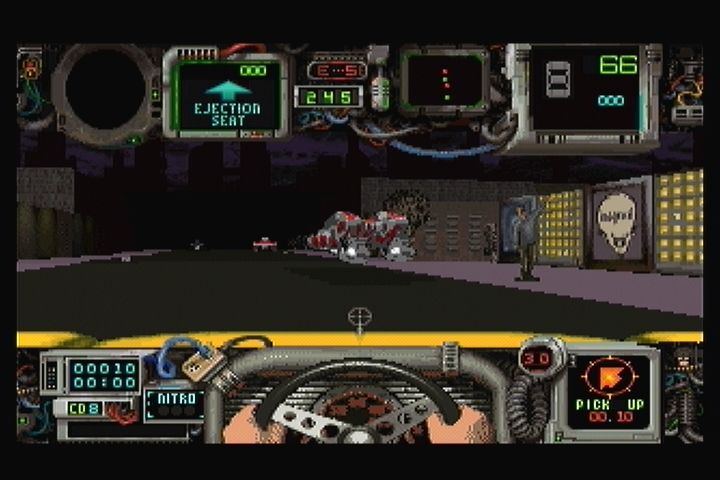
1 Response
[…] on their site, Nathalie Lawhead wrote about their favourite indie games of 2021. A bit of an oldie now, but still very much a goodie. A cool roundup of some cool indie […]